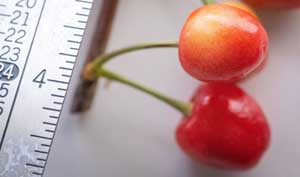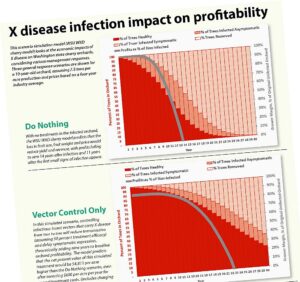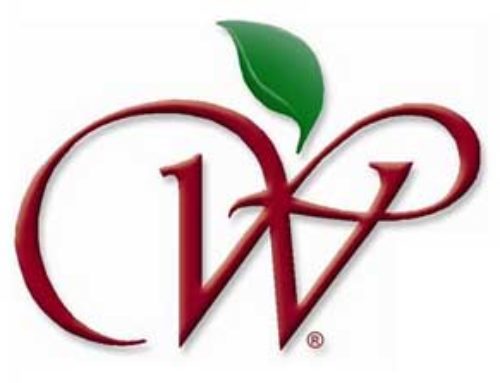Now many years into the battle against X disease and little cherry disease, growers find themselves skipping the testing phase, going straight from cherry symptoms at harvest to chain saws as soon as possible.
“Once your crews are dialed in on symptoms, you can go straight to removal,” said Garrett Bishop, a consultant with G.S. Long Co. and a member of the industry’s Little Cherry Task Force.
That consensus was shared by three growers who spoke about the evolution of their response to the vector-transmitted diseases that render cherries unmarketable during a Little Cherry Disease Workshop organized by Washington State University Extension in Yakima on Feb. 25. Panelists Craig Harris of Harris Farms, Garrett Henry of Douglas Fruit Co., and Teah Smith of Zirkle Fruit Co. all spoke about how they incorporated new research findings and strategies to make their disease management more efficient, while Bishop served as moderator.
Harris said he has scouts check every row the week before harvest, carrying blue spray paint to mark the trunks of trees showing the characteristic symptoms of small, pale fruit. But he only tests trees showing questionable symptoms that might be caused by other problems when tagged in an orchard where they have yet to see any infection.
Removing infected trees as soon as possible reduces the inoculum that can spread. Henry said that after an aggressive removal strategy, including taking out entire blocks of peaches and nectarines, the disease has become easier to control.
“Our take-home is to get the inoculum down with removals,” he said.
WSU recommends applying glyphosate to the symptomatic trees — either by painting stumps or with a “drill and fill” method — to ensure root death and see if there was any root-grafting. If the roots can transmit the herbicide to a neighboring tree, they could also have transmitted the pathogen. Smith said she skips this step, in favor of speed, but Harris said he uses it, even in whole-block removals, to ensure the trees are completely dead before he can get crews in to do the removal work.
As for management of the leafhopper vectors of X disease, growers agreed that trapping is important. Smith said she designs her trap placement based on where the leafhopper and disease pressure is coming from. Her focus is on postharvest management, as the in-season spray program targeting other cherry pests also keeps leafhoppers in check.
Harris said his spray program varies depending on pressure. In a high-pressure orchard, he keeps really tight spray intervals; in orchards with lower pressure, he’s able to back off a bit.
Researchers have shown that the leafhoppers primarily live in broadleaf weeds and that reducing those — by planting new orchards with grass as a ground cover, for example — can reduce leafhopper populations and X disease transmission. Henry said that planting new blocks with grass seems to be working.
Smith shared that improving weed management at one orchard where weeds had been building up at the edges of bird nets made a big difference.
“We saw a tenfold decreases in leafhoppers after we caught that,” she said. “Again, this is on one year of information, but I think the weed management is really important.”
The workshop also featured updates for researchers working on little cherry disease management.
—by Kate Prengaman








Leave A Comment